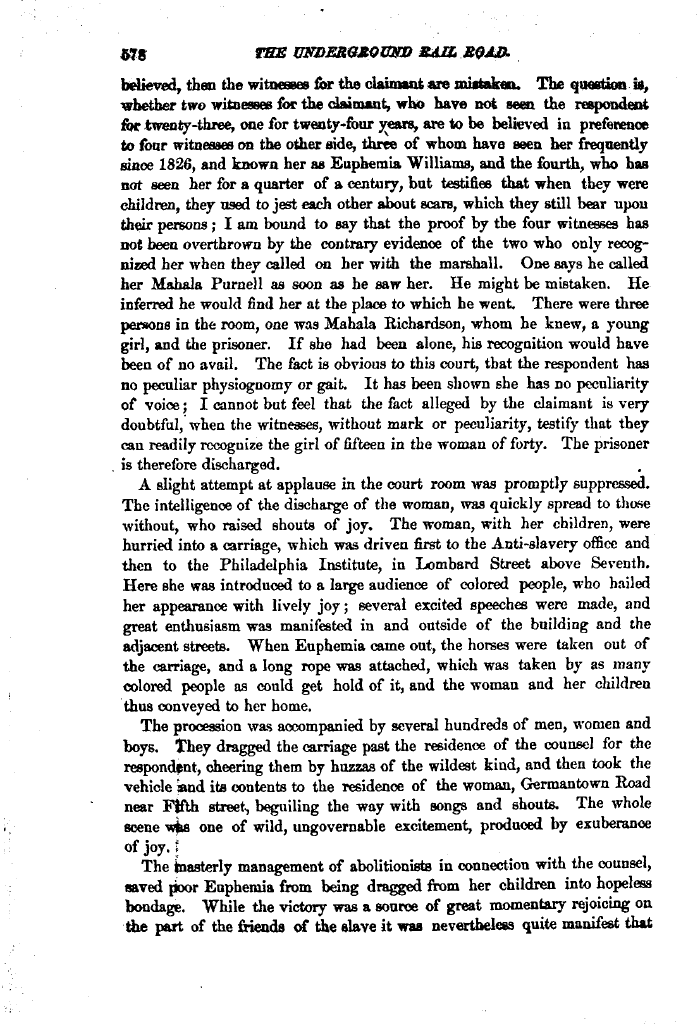 |
||||
 |
||||
| Wt THE UtfDERGJtGCyV BJJZ £$AD. believed, than the witnesses for the claimant are mutakao. The question is, whether two witnesses for the claimant, who have not serai the respondent for twenty-three, one for twenty-four years, are to be believed in preference to four witnesses on the other side, three of whom have seen her frequently since 1826, and knowa her as Eupbemia Williams, and the fourth, who has not seen her for a quarter of a century, bat testifies that when they were children, they used to jest each other about scare, which they still bear upon their persons; I am bound to say that the proof by the four witnesses has not been overthrown by the contrary evidence of the two who only recognized her when they called on her with the marshall. One says he called her Mahala PurneH as soon as he flaw her. He might be mistaken. He inferred he would find her at the place to which he went There were three persons in the room, one was Mahala Richardson, whom be knew, a young girl, and the prisoner. If she had been alone, his recognition would have been of no avail. The fact is obvious to this court, that the respondent has no peculiar physiognomy or gait. It has been shown she has no peculiarity of voice; I cannot but feel that the fact alleged by the claimant is very-doubtful, when the witnesses, without mark or peculiarity, testify that they can readily recognize the girl of fifteen in the woman of forty. The prisoner is therefore discharged. A slight attempt at applause in the court room was promptly suppressed. The intelligence of the discharge of the woman, was quickly spread to those without, who raised shouts of joy. The woman, with her children, were hurried into a carriage, which was driven first to the Anti-slavery office and then to the Philadelphia Institute, in Lombard Street above Seventh. Here she was introduced to a large audience of colored people, who hailed her appearance with lively joy; several excited speeches were made, and great enthusiasm was manifested in and outside of the building and the adjacent streets. When Euphemia came out, the horses were taken out of the carriage, and a long rope was attached, which was taken by as many colored people as could get hold of it, and the woman and her children thus conveyed to her home. The procession was accompanied by several hundreds of men, women and boys. They dragged the carriage past the residence of the counsel for the respondent, cheering them by hozzas of the wildcat kind, and then took the vehicle and its contents to the residence of the woman, G«rmantown Road near Fifth street, beguiling the way with songs and shouts. The whole scene Tvfca one of wild, ungovernable excitement, produced by exuberance of joy.' The inasterly management of abolitionists in connection with the counsel, saved poor Enphemia from being dragged from her children into hopeless bondage. While the victory was a source of great momentary rejoicing on the part of the friends of the slave it was nevertheless quite manifest that |